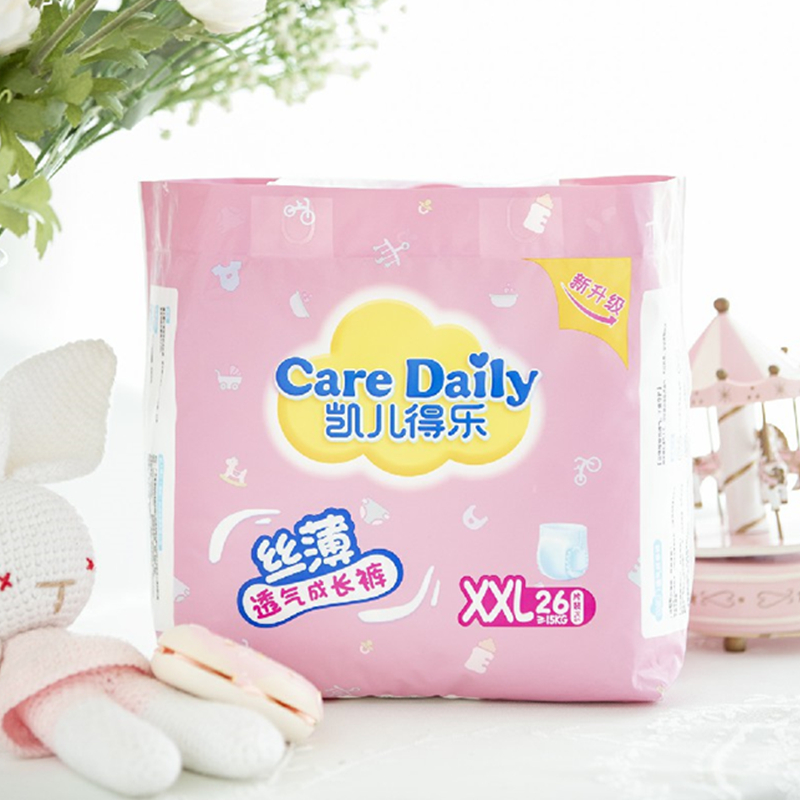Recently, the national standard GB/T 28004.1-2021 "Diapers Part 1: Baby Diapers" proposed by the China Light Industry Federation has been officially implemented. This standard, together with GB/T 28004.2-2021 "Diapers Part 2: Adult Diapers", will officially replace GB/T 28004-2011 "Diapers (Pieces, Mats)". The reason why the diaper standard is divided into two is mainly due to the significant differences in raw materials, product performance, safety requirements, and other aspects between baby diapers and adult diapers, especially in terms of safety technical indicators. Moreover, similar regions such as South Korea and Taiwan have separately established standards for baby diapers and adult diapers. So the release of GB/T 28004-2021 is more scientific and standardized. The new testing standards for baby and toddler diapers are developed based on a comprehensive evaluation and research of the unique characteristics of their users, as well as the feasibility of production technology from manufacturers, product quality and safety, consumer health, and many other aspects. The old standard only tested four indicators for infant and toddler diapers: size deviation, permeability, pH value, and exchange moisture. The deviation mainly determines the total length, full width, and strip mass. The permeability mainly tests the amount of sliding, backflow, and leakage. Of course, there are also requirements for appearance, raw materials, and hygiene indicators.

Health indicators
Baby diapers belong to the category of disposable sanitary products for excretion, and their hygiene requirements must meet the corresponding requirements in the mandatory national standard GB 15979 "Hygienic Requirements for Disposable Sanitary Products", that is, coliform bacteria and pathogenic purulent bacteria must not be detected, and the total number of fungal and fine bacterial colonies must meet the corresponding limit requirements (total number of fungal colonies ≤ 100 cfu/g, total number of bacterial colonies ≤ 200 cfu/g)
Use performance indicators
Added performance indicators such as surface adhesion, anti leakage performance, and maximum applicable waist circumference, and modified the method for measuring permeability performance.
If the production process of diaper production enterprises is unstable or unqualified raw materials are used, it may cause the absorbent resin in diapers to seep into the surface layer and come into direct contact with infants and young children, which may scratch the baby's skin, causing consumer dissatisfaction and panic. Based on this, the new standard specifies the surface adhesion index, which stipulates that the surface adhesion is ≤ 5 pieces per piece.
Infants and young children may have different lying positions when using diapers. If leakage occurs, it can contaminate clothing, mattresses, etc., which is a concern for consumers. This indicator evaluates the anti leakage and edge blocking effect of diaper products, and the standard is "no side leakage".
Baby diapers are a product with elastic waist circumference, and their maximum suitable waist circumference has a significant impact on consumer selection and use. The use of unsuitable baby diapers may have adverse effects on infants and young children. If the product is chosen too small, it is easy to cause the waist and thighs to be too tight, which will affect blood circulation. If it is too large, it is easy to have problems such as leaking urine, falling down, and inconvenient movement. The new national standard refers to GB/T 33280-2016 "Specifications and Dimensions of Diapers", which specifies the maximum waist circumference applicable to baby diapers, standardizes product specifications, and guides parents to choose products that are more suitable for their babies.
Penetration performance is the core indicator that affects the use of baby diapers. Based on the actual usage scenarios of the product, the new national standard sets three major indicators: absorption speed, backflow rate, and penetration rate to comprehensively evaluate the penetration performance of baby diapers.
Absorption rate: The absorption rate is used instead of the slip rate indicator, and it is necessary to detect the first and second absorption rates.
Infiltration amount: For infants and young children's diapers and diapers, the unified requirement is ≤ 15.0g.
Penetration rate: The requirement for baby diapers is ≤ 1.0g, and there is no requirement for diapers.
Safety indicators
Due to the fact that all organs of infants and children are in the stage of growth and development, they are more susceptible to external damage, and there are certain limitations in children's recognition of external hazards. Therefore, the new national standard adds six categories of safety indicators, including heavy metals, formaldehyde, transferable fluorescent substances, acrylamide, phthalates, and decomposable carcinogenic aromatic amine dyes, on the basis of systematic research on the safety of infant and child products, Assist children in healthy growth.